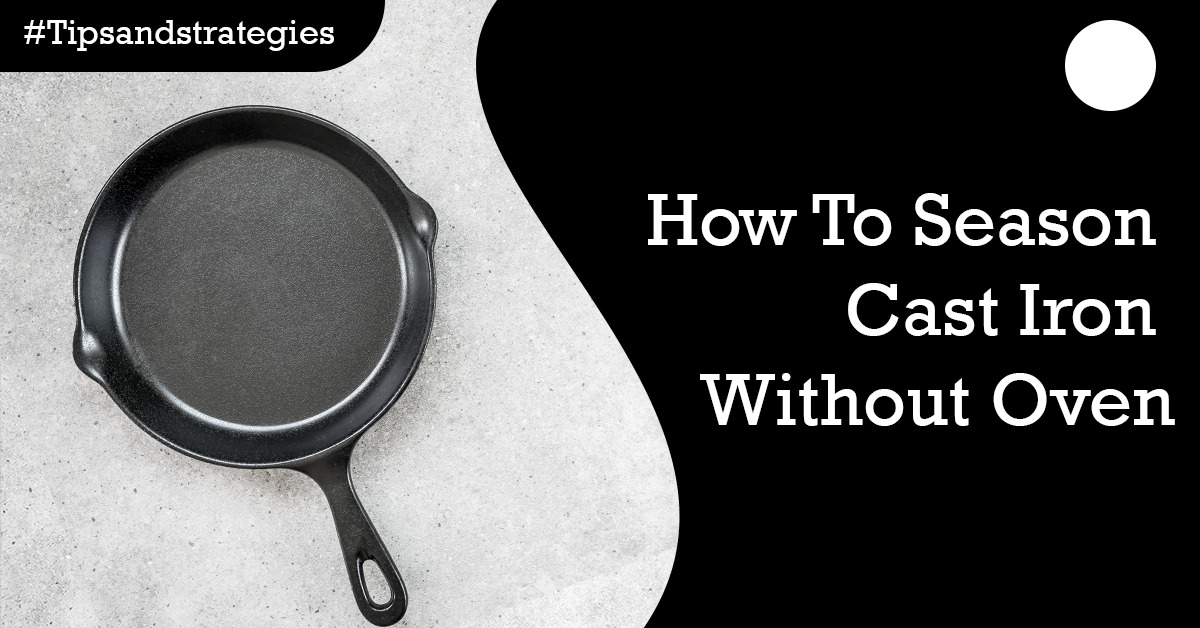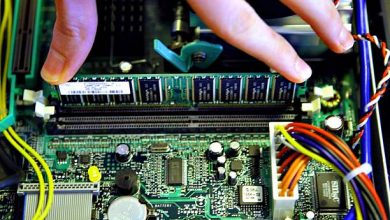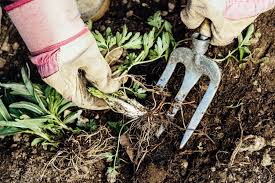How To Season Cast Iron Without Oven

How To Season Cast Iron Without Oven: Whether you are a skilled chef or not, a cast iron pan is one of the most practical pieces of cookware. Despite the durability of these cookware, many individuals choose not to maintain them.EnoughInfo.com

This article included a list of efficient techniques for cleaning cast irons outside of an oven. Continue reading to learn how to season cast iron without an oven.
What is seasoning, and why is it necessary for cast iron?
While many people think that seasoning is coating a cast iron pan or skillet with oil or fat to prevent corrosion and provide a nonstick surface, the real procedure goes by a different name. The process of “polymerizing” cast iron involves adding layers of fat that, when heated, link to the metal surface and form a coating of plastic. How to Cook Chicken Breast
The process of polymerization transforms fat into plastic. This layer is crucial for cast iron because it protects it from rust caused by exposure to high temperatures, water during cooking, and moisture during storage.
FAQs & Answers on How To Season Cast Iron Without Oven
1. How long should you season cast iron without an oven?
It won’t take more than 10 minutes to heat cast irons on your stove and coat the nonstick surface with oil. Without an oven, seasoning cast iron doesn’t need much of your time. But is it okay to use a glass oven lid?
2. What happens if cast iron is not seasoned?
Cast iron skillets will be vulnerable to corrosion and rust if you don’t season them. To fully use its naturally non-stick surface for cooking, seasoning is required.
However, if you often cook fatty foods, cast iron pans could still be good provided you don’t season them. But keep in mind that upkeep is still crucial. Ways to Cook Steak (5 Effective Strategies)
3. For seasoning cast iron, what oil is best?
Cooking oil mixtures high in unsaturated fat, such as vegetable oil, canola oil, olive oil, peanut oil, or avocado oil, are the finest for seasoning cast iron.
However, using coconut oil or butter is not advised. These two may interfere with the polymerization process since they contain significant levels of saturated fats, which prevents the pan from being properly seasoned.
How To Season Cast Iron Without Oven
Top stove method
It’s simpler than you would seem to season a cast iron pan on the stovetop without using an oven. Remove the food or debris from the pan with a paper towel. Place your skillet on the stovetop and turn the heat to medium-high. Then fill the pan with a little shortening. For approximately 10 minutes, heat it until the oil has dried, then take the pan out. Continue doing this until the skillet seems shiny, smooth, and dark.
Grill Method
Cast iron pan seasoning on the grill is practical since it eliminates the need to fill the kitchen with smoke from burning fats. In the beginning, shorten your pre-seasoned pan and preheat it upside-down at 375° F for at least an hour. Cook the pan on the grill until the shortening is dry and the cooking surface has a nice finish.How To Cut Brie(2023 Guides)
Seasoning it
Clean & Dry Cast Iron
The first step in seasoning your cast iron skillet is to clean it of food residue and debris. Before seasoning the pan, do this to make sure there are no hazardous or dangerous residues left within. Your cast iron pan should be cleaned with soap and water, then dried with a cloth or paper towel. To make sure that the cooking surface is thoroughly dried, let it dry for a few minutes. How To Increase Testosterone Naturally(A Complete Guide)
Add an Oil Layer
The surface of the pan will now get oil. If you use the stovetop approach, coat the interior and outside of your cast iron pan with heavy frying oil. High unsaturated fat oils, such as lard, canola, or maize oil, are advised. Cast iron pans may be made to have a smoother, glossy non-stick surface by lightly coating them with shortening.
Place It On the Stove or Grill
Put your cast iron pan on the burner and put it to medium heat for approximately 10 minutes after coating it with oil. Put the pan upside down if you’re using a grill so the heat from the grill can permeate the surface. Flame shouldn’t be used on the grill since it might damage the surface. Prior to putting your pan on the grill, use coals and heat the surface to 375° F.
Move It Around Until It Smokes
While heating on the stovetop or grill, move your seasoned cast iron skillet around until the oil hits the smoke point and begins to burn and dry out.Best Foods To Boost Testosterone(2023 Guide)
Moving the pan will assist the heat spread evenly throughout the surface and give your pan a uniformly smooth and shiny finish. How To Set And Achieve Meaningful Goals In Life
The oven approach does not need this procedure.
Cool Down & Wipe It Up
During the seasoning process, the oil will polymerize and create the initial layer of plastic coatings on the pan’s surface. Remove it from the burner or grill after approximately 10 minutes, then let the pan to cool.
Avoid splashing cold water on the pan or placing it under running water as this might harm it. Wipe away any extra oil from the pan’s surface when it has cooled.
Repetition: 3–4 times
For a strong base for seasoning a cast iron skillet or pan, repeat the procedure three to four times. If you do not regularly use cast iron pans, it is also advised to season your skillet at least once a month to retain the quality.
Caring for Your Seasoned Cast Iron
Once seasoned, you should use cast iron often since seasoned cast iron if stored in a cabinet for an extended period of time, may develop a gunky coating and even get somewhat rancid. If this occurs, wash the cast iron and gently re-oil it. The more you utilize cast iron, the better.
If possible, clean your cast iron pan or skillet as soon as you’re done using it. You don’t need soap to achieve this; all you need is water. Food may be easily removed from the non-stick surface, and even tough stains can be cleaned or scraped off. How To Treat Shift Work Sleep Disorder
Make sure it is entirely dry and moisture-free after washing. After letting it air dry, wipe it again to make sure it is completely dry before applying a little coating of oil and storing it. The oil coating ought to cover the surface completely without collecting on the cooking surface.
Even while you don’t always need to season your cookware after each use, doing so keeps the seasoning on the surface, which over time gradually builds up and begins to give your meal that distinctive cast iron taste. Additionally, by doing this, the likelihood of rust will be decreased. Rust can be removed, but it requires some work, and you may need to re-season the item afterward. Prevention is always preferable to treatment.
Storing Your Cast Iron Cookware
Cast iron is quite heavy and may easily harm cookware made of lighter materials, so keep that in mind if you want to store it alongside other cookware. Therefore, either keep all of your cast iron cookware in its own cabinet or use paper towels to prevent scratching.
Always try to keep your cast iron in an area with sufficient ventilation to avoid moisture accumulating on the cooking surface. If you reside in an area with high humidity, choose a dry cabinet and make sure the pot or pan is dry before storage.
Conclusion
Generally speaking, it’s crucial to consistently season your cast iron by frying your preferred dishes in it every day. Your non-stick, pre-seasoned cookware benefits from monthly re-seasoning. Using soap and hot water to wash your pan will help to reduce the corrosion of the protective covering.
Iron pans may benefit from seasoning with hot oils, which will also make them more resistant to damage. Following the simple instructions described above will allow you to properly care for your cast iron cookware without using an oven.
Recommended;
How to Cook Potatoes in the Oven
How To Make French Toast(Step by Step)
Ways to Cook Steak (5 Effective Strategies)




